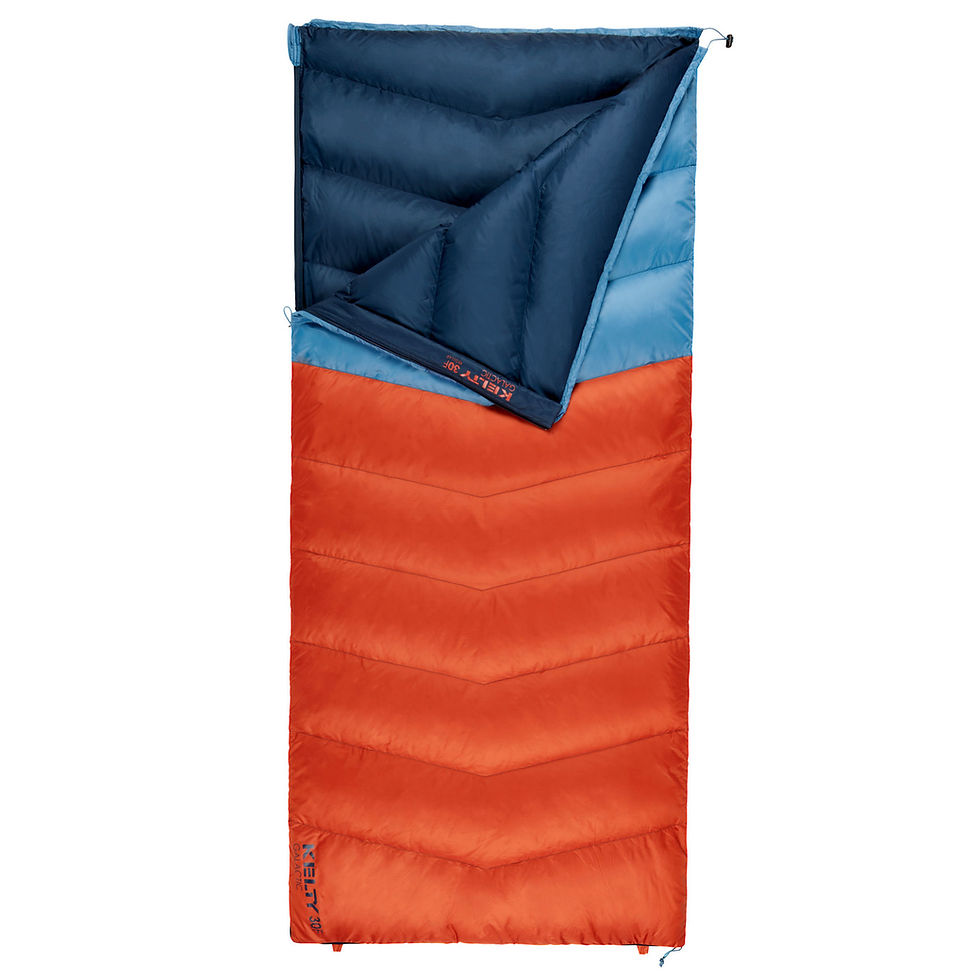Tips: Down vs Synthetic
- Darragh Kennedy
- Aug 15, 2022
- 2 min read
When buying your next bag or jacket, there are important considerations.

In a nutshell: Down is more expensive (usually), is more compressible, is warmer (usually) and is more light weight, but it's not always the best choice for a trip. Read on to find out why.
Down refers to the fluffy down that is found under the feathers of Geese on their belly. The power of this material is that it is exceptional for insulation and warmth. Although duck down is also used, it tends to be less prized than goose down because it is slightly less compressible - taking more feathers to fill a space, increasing the weight of a product.
Down will usually have a higher "warmth to weight ratio" to synthetic fibers. Essentially meaning that in general, a 15oz down jacket is likely to be warmer than a 15oz synthetic jacket, with the synthetic jacket needing to add more fill to compete with the insulation properties of down, thereby making the jacket heavier - and as you know, hikers obsess on those extra ounces!
This is a concept that is ubiquitous in sleeping bags and jackets that refers to "fill power". Fill power, as it pertains to gear, usually falls between 600 and 900, with the higher number signifying greater warmth by virtue of the fact that the quality of the fill is better. So, for example, the Hard Land puffy I reviewed comes in at 650 fill power, and the Patagonia puffy I reviewed comes in a 800 fill power. So what does this mean?
Fill power refers to how many cubic inches one ounce of down can fill. So per the examples above:
An ounce of the Hard Land puffy down will fill 600 cubic inches.
An ounce of the Patagonia puffy down will fill 800 cubic inches.
So, almost counter intuitively, there is LESS down needed in the Patagonia jacket, thereby making it a lighter, more desirable jacket (to some).
One thing to look out for is the ratio of down to feathers - usually listed like this: 80/20 (down vs feathers). It is very common, even in premium products to "pad" out a jacket by combining less expensive feathers to premium down - however, those feathers do not have as high an insulating ability as the down, so the higher the ratio of the down, the warmer the jacket will be.
The main problem with down though, is that if it get's wet, it tends to clump and it loses its insulation properties.
So if you are confident that you will avoid rain/snow/getting wet, down will provide you better insulation, keep you warmer, will be lighter, but at a higher price.
So why not go with a synthetic?
Well in some instances, that synthetic jacket will be a better option. Perhaps there is a risk of rain. Perhaps you don't need a jacket quite as warm as a down jacket. Perhaps you want a less expensive alternative to down. All good reasons, and synthetic jackets are great in their own right too. I personally own both and interchange them depending on the conditions I am facing.
Your synthetic will likely be a bit bulkier, a bit heavier and not quite as warm - but that may work out just fine for you - especially if rain is in the forecast!



Comments